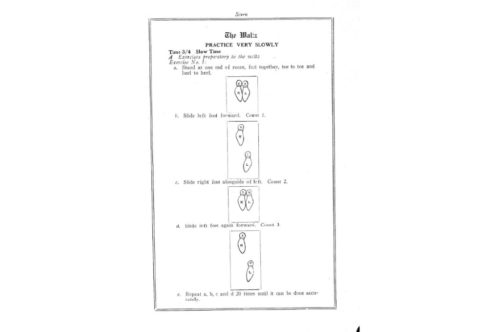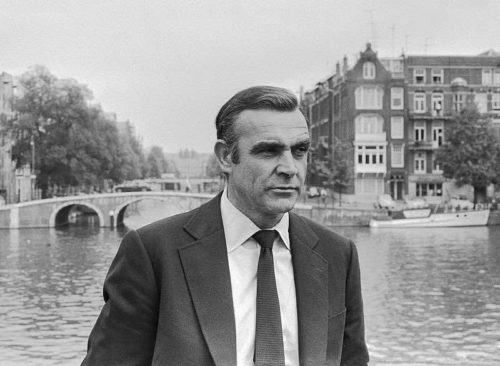For more about Gay Haubner’s life in the North Country, read the other chapters in her serialized memoir. The Post will publish a new segment each week.
I spent most of ninth grade imagining myself flitting about Haight-Ashbury, swinging my love beads and my perfect, shiny, Michelle Phillips hair, ingesting an interesting variety of drugs, and being fawned over by boys who looked like Mick Jagger or Jim Morrison. But my sad reality was that I was a plain girl with glasses, wearing clothes picked out by my mother, a girl who had never even sipped a beer or smoked a cigarette.
The swinging 60s, the youth revolt, consciousness-raising, be-ins and sit-ins and rap sessions were all happening very far away. Duluth was still country clubs, bridge parties, scary greasers from the West End with pomaded hair, black leather jackets, and white tees, useless home ec lessons, Sunday church dresses, dads driving while drinking a can of Grain Belt beer and then chucking the empty to the side of the road. We were so far out of the mainstream we hadn’t even gotten the Keep America Beautiful message.
No Duluth tradition was as firmly welded into the past as Cotillion. Every year, twenty fourteen-year-old boys and twenty fourteen-year-old girls were invited to take part in Cotillion, or in plain English, ballroom dancing lessons. This was a privilege reserved for kids from “better” families: we were the sons and daughters of doctors, lawyers, businessmen, who lived in the big houses in the prestigious neighborhoods. Never mind that the rest of the country was doing the frug, the pony, and the monkey. We chosen few were learning to fox trot.
Cotillion was held Thursday nights, from seven to nine on the second floor of Northland Country Club, and if that was a ballroom I’m the Queen of Spain. A long bench ran along all four sides of a drab, drafty room, half occupied with sweating, dweeby boys in ill-fitting jackets and strangling neckties, and half by anxious, overdressed girls. Girls were required to wear white gloves, god forbid our hands should touch sweaty boy hands. Dancing was taught and decorum maintained by two elderly, overweight matrons, who had been annoying the golden youth of Duluth for years untold.
For most of the dragging hours, the boys asked the girls to dance. Who knows what was worst: waiting, waiting, waiting, until I was the only girl still sitting on the bench and short, pimply Tom Gunderson, after examining the ceiling and the floor, just in case there was another girl hiding there, grudgingly asked me to dance; or on the rare occasion, when the planets aligned, of a girl asking a boy dance, when I had to decide how high to aim and how quick to move. A boy couldn’t turn me down, but he could make a face letting me know that he was hoping any other girl would have gotten to him before I did.

I hated Cotillion. It reinforced my lowly standing in the ninth grade boy-girl Olympics: only if a spelling bee broke out would I ever be any boy’s first choice. And it was impossible for me to learn to fox trot or cha cha or waltz, being literally unable to tell my right foot from my left. My unlucky partner and I would be shoved to the side of the room by one of the dance mistresses, who would then loom over me, glaring at my feet and shouting “ONE AND TWO AND CHA CHA CHA.”
My mother was thrilled to supply dress after dress for Cotillion; but it didn’t matter how cute my dress was; no boy cared about a dress. This was a lesson I was unable to get through my head; at the ninth grade graduation party my adorable Dr. Zhivago-inspired dress and fancy beauty shop up sweep failed to entice a single boy to ask me to dance.
Cotillion did teach me how to keep my tears of embarrassment and shame damned up those nights when the boy-girl numbers did not match and I was left alone on the bench, dance after dance, until some unfortunate boy was forced to come over and offer me a sweaty palm. I learned that when it’s whispered through the ballroom that Martin Luther King was assassinated, and the dance mistress is still clapping her hands and telling the boys to hurry and pick out their partners, that something is severely screwed-up.
After being chosen last at every Cotillion and left holding up the wall at the ninth grade graduation dance (I finally retreated to the girls’ bathroom where I had a good cry and then washed my face so my mom wouldn’t know that her choice of dress and hair do had not worked a miracle) I was convinced that I would never have a boyfriend.
Then one warmish June day, right before the end of school, I received two gentleman callers. My mother, down to one of her last nerves, had thrown all three of us girls out of the house. Heidi and Lani had gone off in search of other kids; I was slumped on the front steps engaged in my favorite outdoor activity, reading a book, when down Lakeview Avenue lumbered two gangly teenage boys, looking, shockingly, for me. It was Joe Sloan and Wesley Baggot.
Wesley was in ninth grade at Woodland, though not in any of my classes, and definitely not a member of Cotillion, having the longish hair and scruffiness of a would-be greaser. He was cute enough, though, and he was a boy. I had never spoken to Joe Sloan, who was taller with longer hair, and an air of mystery. The Sloans, a family of seven or eight children, lived in an immense robber baron mansion, a house with an unknowable number of rooms built of ominous black stone blocks, complete with gatehouse and a quarter-mile of winding driveway, set back on acres of dark piney woods. I had been delivered several times to this house to play with a girl my age, Jane Sloan, a musical prodigy who eventually went off to boarding school. I don’t remember if we played Barbies or board games or hide and seek in that huge house, my memory is stuck on the concert grand piano, ebony black and the size of a car, smack in the middle of a living room as big as a tennis court, and on the industrial-size chrome milk dispenser in their kitchen: you’d lift the heavy lever and milk would run from a clear tube into your glass. I also remember glimpses of Jane’s brother Joe, who had a reputation for borderline juvenile delinquency, and who attended not a fancy pants boarding school, but one intended to correct the waywardness of rich boys.
Of my two suitors, of course I preferred Joe Sloan, especially because when they stopped at my front sidewalk, he lit a cigarette. I managed to not hyperventilate and to actually make small talk with two boys, discussing the merits of East High, where I was going, and whose students were regarded by all other Duluth teens as Cake Eaters, and Central, the other side of the track school, whose sports teams regularly thumped East, and where Wesley was headed. Joe did not comment on his school, but lit another cigarette and said he had to go. Joe and Wesley gave me a “See ya,” ambled off, and I rushed back into the house to call Cindy Moreland and tell her that I had just talked to two boys, one of whom was a year older and really, really cute, then spent the rest of the day imagine Joe reaching for me and sweeping me up in a passionate kiss that tasted like Lucky Strikes.

It took a few more visits from the two boys before the semi-awful truth came out: I was not the object of Joe’s desire. It was Wesley Baggot who asked me out on my first date. I can count on the fingers of one hand how often a boy has asked me to the movies, so every moment of that event is etched into my brain.
What I wore: black elephant bells of thin-wale corduroy with a pink and green rosebud print. I wish I still had those pants. The bell bottoms were so wide, Wesley Baggot asked if I were wearing two skirts. We went to a James Bond double feature, Dr. No and Goldfinger, very racy stuff for fourteen-year-old me. At some point after the appearance of Odd Job, Wesley’s hand crawled over the arm of the seat to search for mine. Caught in his death grip, I proceeded to lose all feeling in my right hand. I tried to ignore the pins and needles shooting up my arm and the intense embarrassment of watching Pussy Galore and James Bond going at it in on the big screen in Technicolor so I could memorize every detail of my first date, which I poured out to Cindy Moreland the next day, as we wrapped album covers in tin foil to use as reflectors and basted ourselves in baby oil in an attempt to woo a California tan from the pale Minnesota sun.

She sympathized with me over losing out on Joe Sloan, but a boy was a boy. Wesley
Baggot had paid for my ticket, bought me buttered popcorn and a waxy cup of Coca-Cola, and that was an official date. The next step in the Duluth dating ritual was dinner at Somebody’s Place, a small teen-friendly restaurant where no liquor was served; you washed down your choice of thirty-six different hamburgers (ranging from the Italian with red sauce and mozzarella to the “sundae burger” with chocolate syrup and whipped cream) with Swamp Water (a mixture of coke, root beer, and 7-Up), or a pretentious pot of orange and cinnamon Constant Comment tea.

I spent hours waiting for the phone to ring or for Joe and Wesley to show up again on my front lawn, hours in front of the bathroom mirror, applying a pale pink Yardley Slicker to my lips then attempting a sexy Honor Blackman pout, taking my glasses off, thinking I couldn’t read the Somebody’s House menu without them, putting them back on, realizing that I knew all twenty-eight hamburgers by heart, taking them off again, peering under my lashes trying to see what I looked like when I closed my eyes and puckered up for a kiss…all in vain. Joe Sloan and Wesley Baggot had vanished. The phone continued to not ring and I descended into the horrors of the teen girl mope.
Become a Saturday Evening Post member and enjoy unlimited access. Subscribe now




Comments
I must have lived close to you, but we were not the country club set. We were just a turn off of Lakeview on Aspen Lane. There were only three houses — Andy Goldfine, ours, and a couple without children. That Italian burger at Somebody’s House was my favorite — it was the “Napoli Burger.” Love your stories.
Bob/Paul—oh, they were horrible. So horrible that my mind has blocked out every single song that was every played at Cotillion (although there was nothing that was recorded post-1960); I’m sure that hearing the first few bars of any tune that was associated with sitting unasked on a hard wooden bench would trigger PSTD.
Gay, you’ve got several fans here waiting for your reply; unless you WANT me to have the last word. The POST has generously left it on the carousel for six days, and might bump it soon.
Ouch Paul! Sooo, Gay downplayed the angst and horror of those ballroom dance and etiquette lessons, did she? Gay, is this so? And the Tango lessons? Let us know.
My Mom got me into Cotillion too, from 9th grade (1971-’72) to 11th (’73-74) so I’d learn how to dance, be a proper gentleman, learn the rituals of dating in a controlled freedom environment.
The early ones were more what Paul referred to involving bowing and the curtsy of traditional dancing where you had to learn the steps for those dances.
The second year was more fun because they were held at different locales and the dancing was in the ‘separate’ ’60s and later style.
One of them was at the swanky Riviera Country Club in Pacific Palisades and another at the ice skating rink at Laurel Plaza in North Hollywood. Oh, we had one at Busch Gardens Amusement Park in Van Nuys. (It was torn down in ’76 to expand the brewery).
My favorite memory (’73) has to be at the Riviera, dancing with this cute blonde (Marcia Brady hair) to ‘I’m Just a Singer in a Rock ‘n Roll Band’ by the Moody Blues with the strobe lights going!
Cotillion..? Wow way outta my league. But I do remember “Joe Sloan” and his bedroom that took up most of the top floor 😉
I took dance lessons at Northland, too. Although I also suffered teen angst, I have to admit that they helped a bit at high school dances. At a reunion decades later, a classmate told me she liked to dance with me in high school because “you actuallly knew how to dance.” So not a complete loss. (My mom would be happy to read this!)
“This was a privilege reserved for kids from “better” families”…i.e. white and Christian.
The Lester Mayhew School of Ballroom Dancing, we were called “The Mad Hatters”. I think I still have my lapel pin.
You dredged up a memory I had all but forgotten. Ballroom dancing at NCC. I remember how humiliating it was to wait for someone to pick you. I still remember dancing to Paul Anka’s Calendar Girl and every time I hear it I think of the ballroom but you’ve brought the rest of it back.
I feel you somewhat downplay the angst and horror that attended those ballroom dance and etiquette lessons at NCC. Why no mention of the mandatory male bow and obligatory female curtsy that preceded each trip to the dance floor? Have you entirely repressed all memory of the peculiar horrors of the Tango lesson?